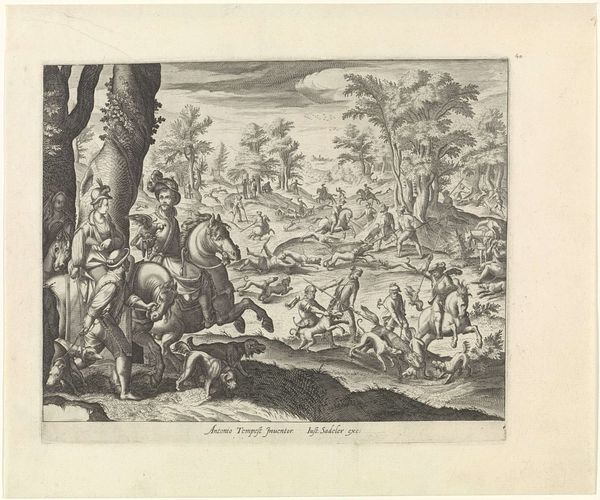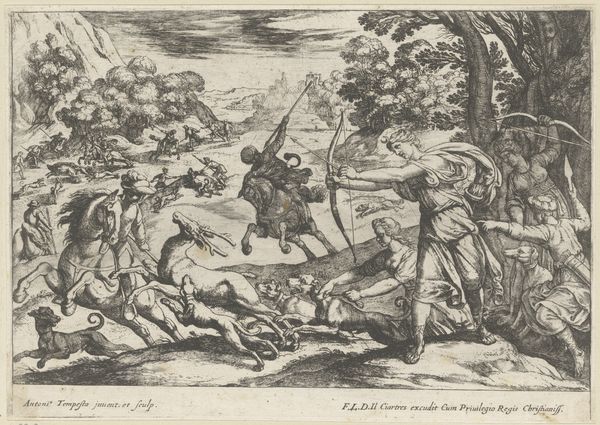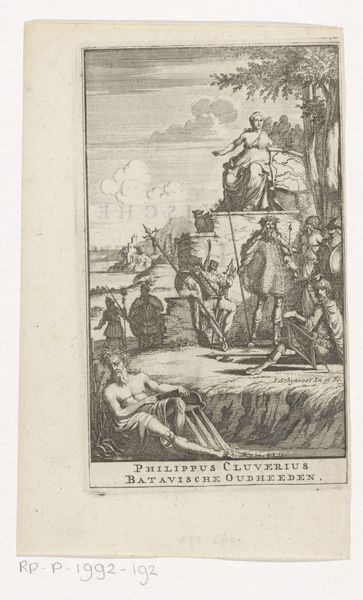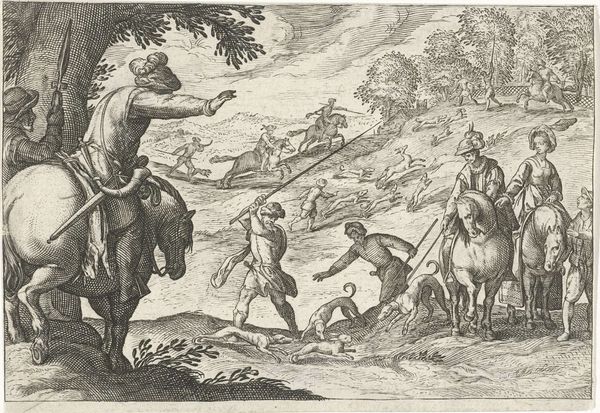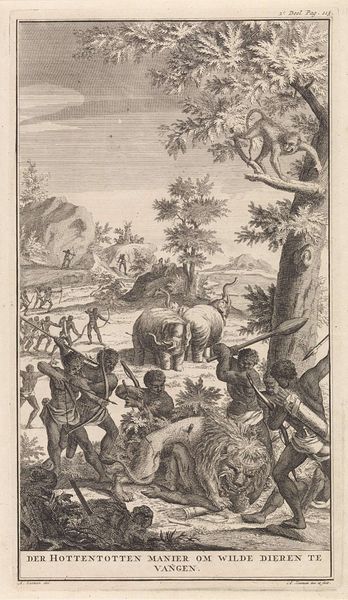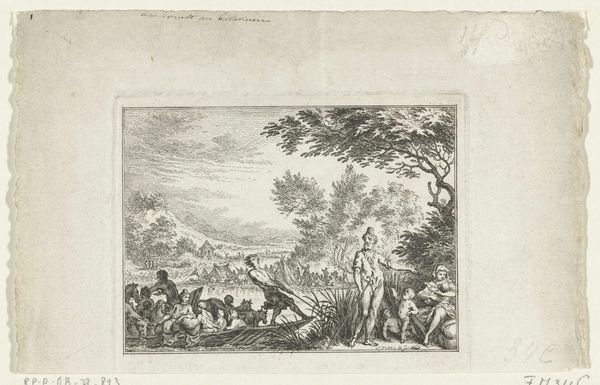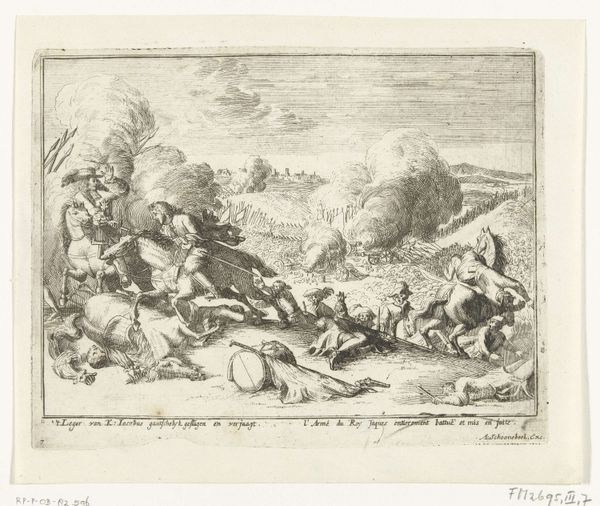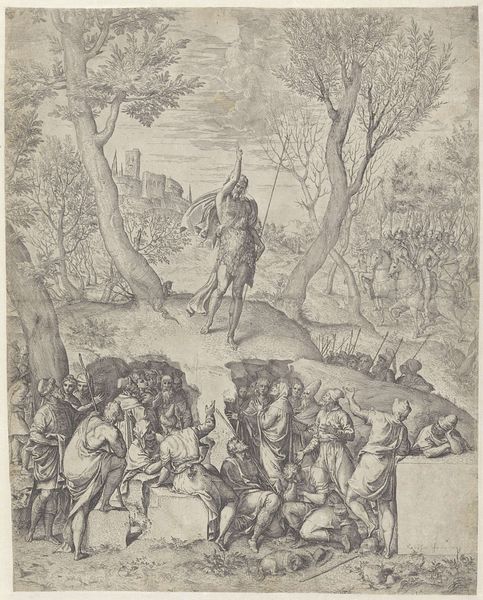
etching, engraving
#
light pencil work
#
baroque
#
pen sketch
#
etching
#
sketch book
#
landscape
#
personal sketchbook
#
sketchwork
#
pen-ink sketch
#
pen work
#
sketchbook drawing
#
history-painting
#
storyboard and sketchbook work
#
sketchbook art
#
engraving
Dimensions: height 195 mm, width 146 mm
Copyright: Rijks Museum: Open Domain
This print, "Ruitergevecht" or "Cavalry Battle," was made by Arnold Houbraken, likely in the late 17th or early 18th century. It's an etching, a printmaking technique that involves biting lines into a metal plate with acid, and then using that plate to make impressions on paper. What's fascinating here is the contrast between the relatively simple means of production, and the complex scene depicted. Look closely and you can see the intricate details – the soldiers in combat, the fallen horse, the landscape – all rendered with a network of fine lines. The etching process allows for a level of detail that would be difficult to achieve by hand. Prints like this were essentially a form of mass media at the time, allowing for the wide distribution of images and ideas. The labor involved was not just the artist’s, but also that of the printer, making these images a product of a collaborative process. By understanding the methods of making, we can better appreciate the cultural significance of these works.
Comments
No comments
Be the first to comment and join the conversation on the ultimate creative platform.

